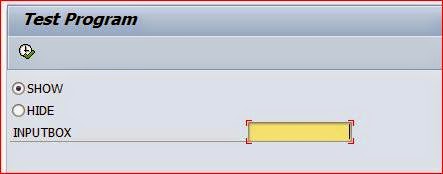Creating Shared
Memory
Call transaction SE24; enter a suitable name to your root
class, as shown in the following screenshot.
On the Properties tab, we need to
make sure that the Shared-Memory checkbox is switched on.
We have named it ZCL_MY_ROOT. We will then define two
Instance Attributes,
NUMBER and NAME, having private visibility, as shown in the
following screenshot:
Two suitable methods, SET_DATA and GET_DATA, are also added
to the class.
The SET_DATA method contains code that imports number and name
and assigns to the attributes
NUMBER and NAME of the class. The GET_DATA
method does just the opposite, that is, it
exports the NUMBER and NAME
attribute for a given shared memory object.
Next, the shared memory area should be created.
This is done
via transaction SHMA.
Enter a suitable name and click on the Create button.
We
have typed the name ZCL_MY_EMP_AREA. On the screen that appears, enter the
description
of the area. Also, enter the name of the root class created earlier in
the Root Class field.
You may leave the Client-Specific Area checkbox unchecked as it
is not required for our recipe.
Now, save your entries. Refer to the following
screenshot:
This will also generate an area class by entering the same
name ZCL_MY_EMP_AREA.
This area class will contain the necessary methods used for
reading, changing, and creating the area,
such as ATTACH_FOR_UPDATE,
ATTACH_FOR_READ, and ATTACH_FOR_WRITE.
For creating the set of code that writes object's contents
to the shared memory, follow these steps:
1. Two object references my_handle and my_root are defined,
one for area class and the other for root class.
2. The static method attach_for_write of the area class
zcl_my_emp_area is called.
3. The CREATE OBJECT with the area handle, my_handle must
then be called.
4. The root and the created area instance must be linked
using the set_root method of the handle.
5. The set_data method is called with the relevant number
and name.
6. The detach_commit method of the area class is then
called.
The read program is somewhat similar. However, instead of
the attach_for_write method used
earlier, we will use attach_for_read.
The same instance
name is passed and the handle is received.
The method imposes a read lock on the
area instance. Then, the get_data method of the root object is
called using the area
handle, my_handle. This returns the employee name and number stored earlier
into the
variables name and number respectively.
Finally, the detach method is called and the read lock is
released.
While creating the shared memory area, if we select the
Transactional Area checkbox, the area
becomes transactional. In this case, the modifications
to the area instance versions are not active
immediately after the call of detach_commit
method. Rather, they become active when the next
database commit is executed.










